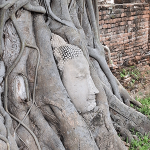Ayutthaya One Day Tour
ILTYA1. Ayutthaya One DayTour
08:00AM - 04:00PM
UNESCO World Heritage Site & Historic Ruined City
08:00 AM: Meet you at your hotel
- The Old Royal Palace (Wat Phrasisanphet)
- Wat Mahathat (Temple of the Great Relics)
- Wat Lokaya Sutaram (The Reclining Buddha)
- Chao Sam Phraya National Museum
- Wat Yai Chai Mongkol
Price: 6,000 THB for 1 person
7,000 THB for 2 persons
- Additional person 1,000 THB.
- Additional Child 700 THB
- (Child price applies to any child who is under 10 years of age)
All prices are in Thai Baht (THB).
Inclusive:
+ Private tour guide
+ Private car & Pick-up / drop-off at your hotel
+ All admission fees & Insurance
+ The tour does not include meals
***DEPOSIT 50% and Balance PAYMENT at the END of TOUR***
Cancellation Policy:
For tours in general (please take a look at each of your tour booking for more specific)
– More than 24 hours get 100% refund
– Between 12- 24 hours get 50% refund
– Less than 12 hours, full amount will be charge
I am much easier to reach by e-mail: ilovetravel.officer@gmail.com
Any inconvenience, Please contact us :
International call : +66 82 1134121 (WhatsApp)
Domestic Call : 082 113 4121
DESCRIPTION
Ayutthaya
UNESCO World Heritage Site & Historic Ruined City
Phra Nakorn Si Ayutthaya The Ayutthaya historical park has become very famous throughout the world since it was recognized as World Heritage Sites by the UNESCO in 1991.
The Old Royal Palace (Wat Phrasisanphet) “Temple of the Holy, Splendid Omniscient” was the holiest temple on the site of the old Royal Palace in Thailand’s ancient capital of Ayutthaya until the city was completely destroyed by the Burmese in 1767, during the Burmese–Siamese War. It was the grandest and most beautiful temple in the capital and it served as a model for Wat Phra Kaew in Bangkok.
Wat Mahathat (Temple of the Great Relics) is located in the center of old Ayutthaya, between Chi Kun Road and Naresuan Road in the northeast corner of Phra Ram Park. According to the official Thai history, referring to the investigations of the Royal Chronicles of Ayutthaya by Prince Damrong Rajanubhab, the history of Wat Mahathat starts in 1374 when King Borommaracha I erected a temple at this place, bearing another name:
Chao Sam Phraya National Museum (Artifacts & treasures from the Ayutthaya Kingdom)
The Chao Sam Phraya National Museum on the historical island of Ayutthaya exhibits artifacts discovered during excavation works and restorations of ancient temples in Ayutthaya. The museum is named after Chao Sam Phraya, King of Ayutthaya in the 15th century. Exhibited are several thousand items including Buddha images, votive tablets, gold artifacts and other treasures recovered from the crypts of several temples.
Ayutthaya architecture and art style Founded in 1351, Ayutthaya developed into a powerful and wealthy Kingdom doing trade with Asian and European countries. Large and impressive temples dedicated to the Buddha as well as Royal palaces were built. The Kingdom developed its own distinct architecture and art. Stucco reliefs, murals, wood carvings and gold ornaments show the craftsmanship of Ayutthaya artisans.
Highlights of the museum The highlights of the Chao Sam Phraya Museum are exhibited in three air-conditioned rooms. They contain mainly items recovered from the crypts of the Wat Ratchaburana and Wat Mahathat. Among them are gold artifacts studded with precious gems, Royal insignia, bracelets, headgear, necklaces, braces, rings and golden votive tablets that show great craftsmanship. One of the most stunning items is a golden Royal elephant studded with gems dated to 1424 that was discovered in the crypt of the Wat Ratchaburana. Another extraordinary item is a golden sword and its golden heath inlaid with precious gem stones. The sword called the sword of Victory (Phra Saeng Khan Chai Sri) belonged to an Ayutthaya King.One of the rooms is dedicated to the Buddha relics discovered in the crypt of the Wat Mahathat, “the temple of the Great Relic”.
Wat Lokaya Sutaram (Reclining Buddha) This temple is one f the most popular archaic sites of Ayutthaya. The outstanding component of this temple is a gigantic reclining Buddha image, which is the biggest reclining Buddha image on the city island, the length of which is 42 meters. A unique feature of this Buddha image is the head part that is supported by a lotus, which is believed to be added shortly after the Buddha image was built. There is no evidence to show when this temple was built but it is believed to be built in the middle phase of Ayutthaya Era. It is also believed that there had been a pantheon built to shelter the Buddha image but the pantheon was destroyed. The Buddha image has been renovated many times, especially in A.D. 1954 and A.D. 1989, until the Buddha image looks completely beautiful. Other remaining archaic constructions of the temple include a pagoda that is around 30 meters high. This temple is surrounded by community households. Since the Buddha image is in an open area, visitors can see the Buddha image anytime.







